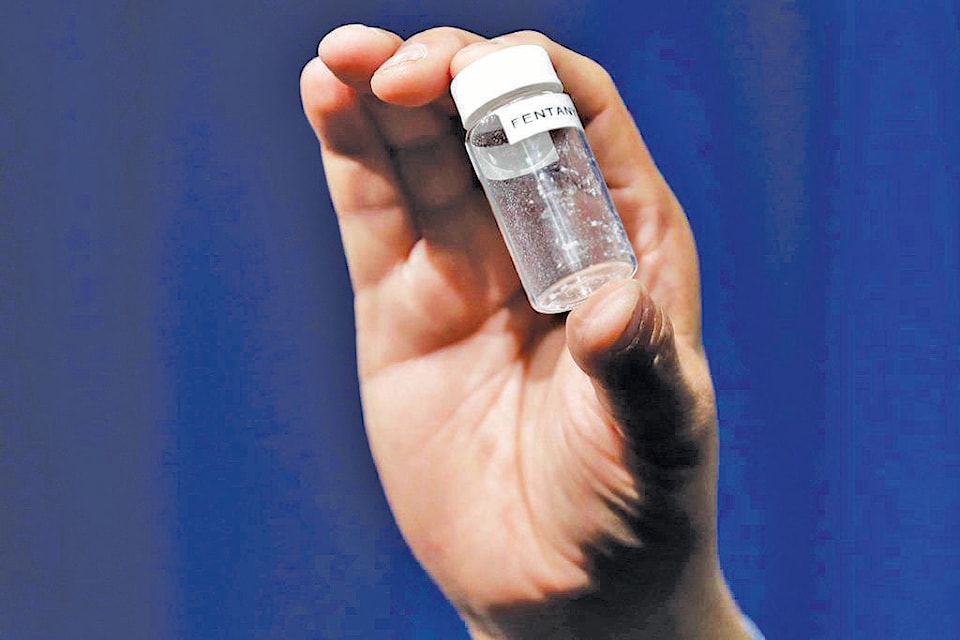A study suggests illicit drug users in B.C. are knowingly using the potentially deadly opioid fentanyl so making them aware of its presence in the drug supply isn’t enough.
The study by the BC Centre for Disease Control and the University of B.C. calls for policy changes to reduce the risk of harm for people who know or don’t know they’re take the powerful opioid.
The study published this week in the International Journal of Drug Policy is based on a 2018 survey of 303 people who accessed services at 27 harm-reduction sites.
It says 60 per cent of participants had fentanyl in their urine and of those, 64 per cent knew they had used fentanyl, double the number from a similar study in 2015.
The previous study found 29 per cent of people tested positive for fentanyl, with only 27 per cent of those aware that they’d used it.
Dr. Jane Buxton, an epidemiologist at the centre, says drug users need more resources, including treatment and alternatives to the toxic drug supply to reduce the devastating impact of fentanyl.
Drug users were unaware of fentanyl’s presence in street drugs such as heroin as overdose deaths started increasing in 2015, prompting the B.C. government to declare a public health emergency the following year. An estimated 5,000 people have fatally overdosed since then.
‘LIKE AN ATM’: World’s first biometric opioid-dispensing machine launches in B.C.
The centre says fentanyl is 50 to 100 times more powerful than morphine and the BC Coroners Services says the synthetic opioid or its analogues, such as carfentinil, were found in 85 per cent of fatal overdoses last year.
Researchers do not fully understand why people knowingly take fentanyl but say some people may have no other choice because it’s present in most of the illicit drug supply.
They say others may prefer the experience of taking fentanyl regardless of other options.
“This research lays groundwork that will help us learn more about why fentanyl use is increasing,” says Mohammad Karamouzian, lead author of the study and a PhD student at the University of B.C.’s school of population and public health.
“These findings will also contribute to more effective messaging campaigns and harm reduction strategies to help reduce preventable deaths and support the health of people who use substances, their families, and their communities,” he says.
About 375 harm-reduction sites in B.C. provide a range of services for drug users.
The Canadian Press
